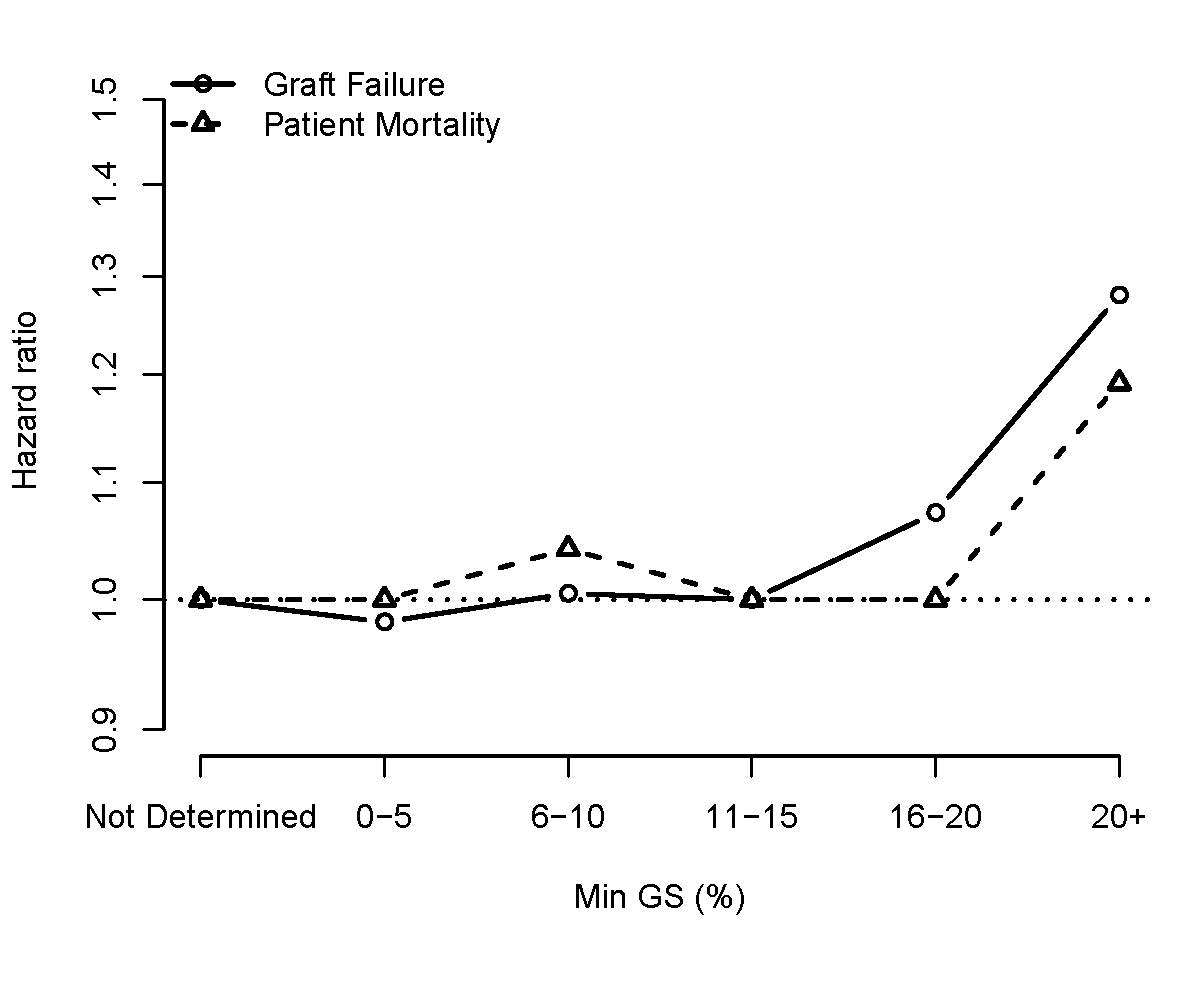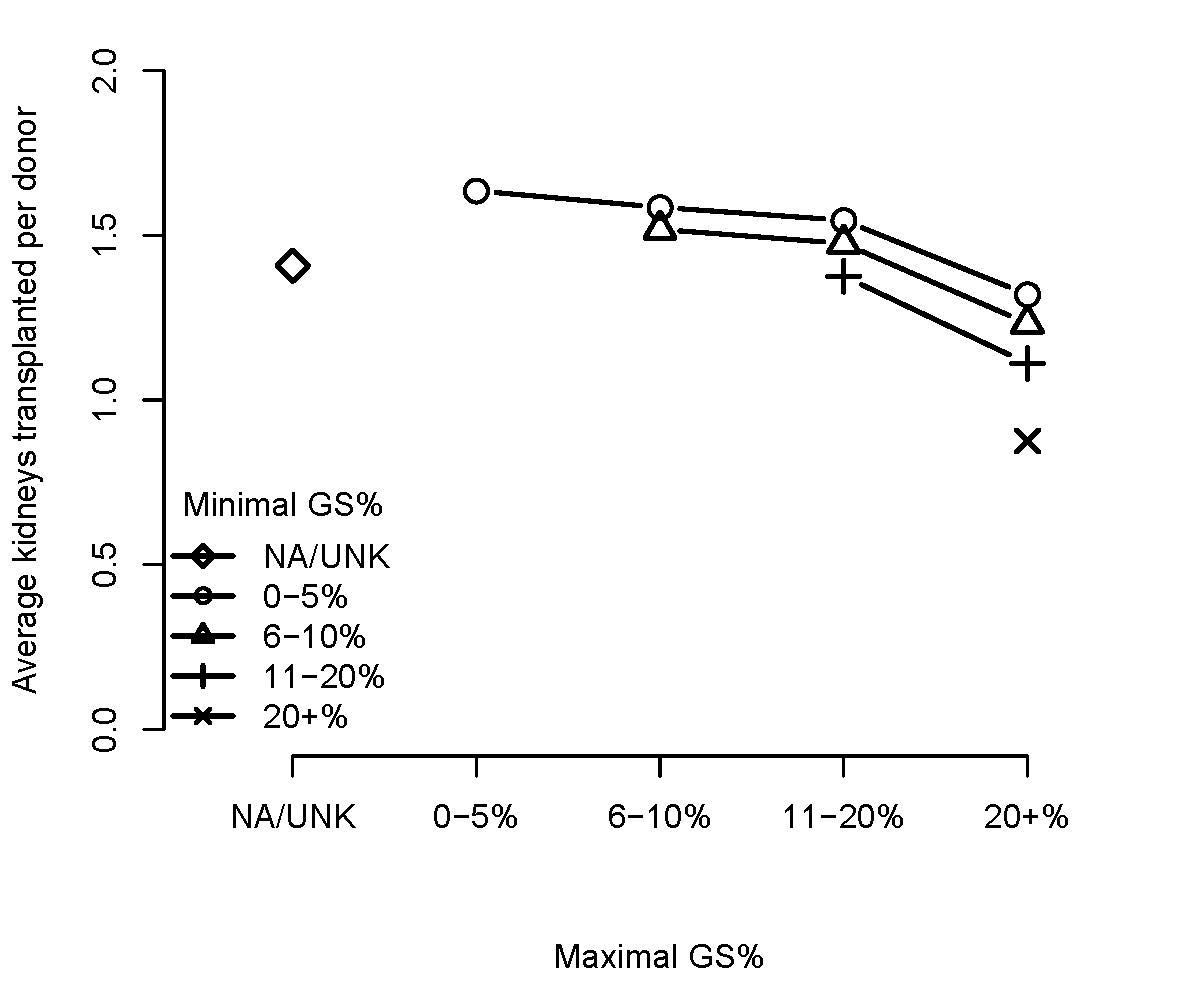Impact of Donor Kidney Biopsy on Kidney Yield and Post-Transplant Outcomes
1Nephrology, Hennepin County Medical Center, Minneapolis, MN, 2Scientific Registry of Transplant Recipients, Minneapolis, MN
Meeting: 2021 American Transplant Congress
Abstract number: 108
Keywords: Biopsy, Graft failure, Kidney, Mortality
Topic: Clinical Science » Public Policy » Non-Organ Specific: Public Policy & Allocation
Session Information
Session Name: Potpourri of Public Policy and Allocation
Session Type: Rapid Fire Oral Abstract
Date: Sunday, June 6, 2021
Session Time: 4:30pm-5:30pm
 Presentation Time: 4:55pm-5:00pm
Presentation Time: 4:55pm-5:00pm
Location: Virtual
*Purpose: Kidney procurement biopsy findings, such as Glomerulosclerosis (GS) is frequently used to determine kidney quality, but it remains unclear the degree of GS in increasing the risk of kidney discard and graft and patient loss. We sought to investigate the impact of GS% on organ yield of organ procurement organizations (OPOs) and patient outcomes of transplant programs by including GS% in yield models and program-specific report (PSR) models.
*Methods: Demographic, clinical and histological information of deceased donors from July 1, 2017 through June 30, 2019 were included in the analysis. Multivariable logistic regression and Cox models with Least absolute shrinkage and selection operator (LASSO) were used in logistic and Cox models to analyze the association of GS with organ yield and 1-year post transplant outcomes, respectively.
*Results: Both maximal GS% and minimal GS% must be known to determine the overall relationship between GS and yield, so maximal GS% was plotted against kidney yield, stratified by level of minimal GS%. Shown in Figure 1, increasing level of maximal GS or minimal GS was associated with lower yield. For example, kidney yield was 1.6 when both maximal and minimal GS were <5%, but only 0.88 when both maximal and minimal GS were >20%. Only minimal GS is needed to determine transplant outcomes. Shown in Figure 2, minimal GS 16-20% was associated with increased risk graft failure (HR 1.05 with GS 16-20% and HR 1.3 with GS>20%) and minimal GS >20% was associated with increased risk mortality (HR 1.2).
*Conclusions: Increased GS was associated with lower organ yield and inferior patient and graft survival after kidney transplantation. Incorporation of GS into the yield and PSR models that occurred since January 2020, likely will reassure OPOs and transplant centers pursuing kidneys with relatively high levels of GS and this approach may promote use of organs with higher levels of GS and reduce discard rates.
To cite this abstract in AMA style:
Wang C, Wetmore J, Wey A, Salkowski N, Snyder J, Israni A. Impact of Donor Kidney Biopsy on Kidney Yield and Post-Transplant Outcomes [abstract]. Am J Transplant. 2021; 21 (suppl 3). https://atcmeetingabstracts.com/abstract/impact-of-donor-kidney-biopsy-on-kidney-yield-and-post-transplant-outcomes/. Accessed July 18, 2025.« Back to 2021 American Transplant Congress


